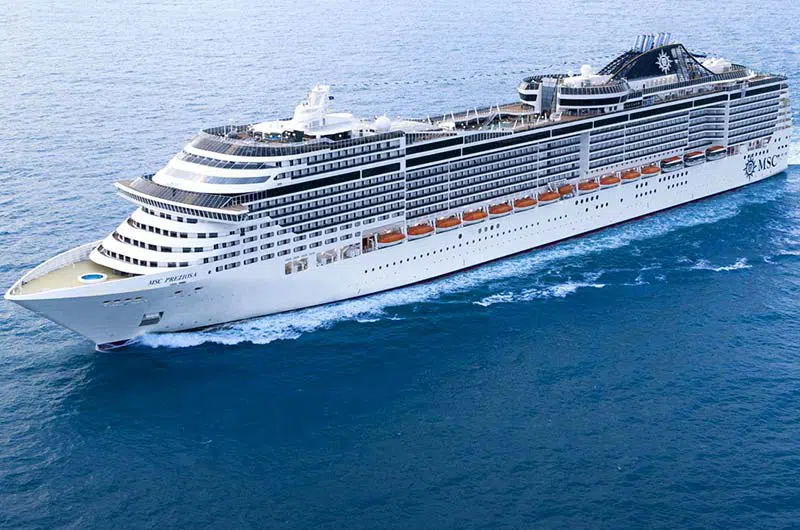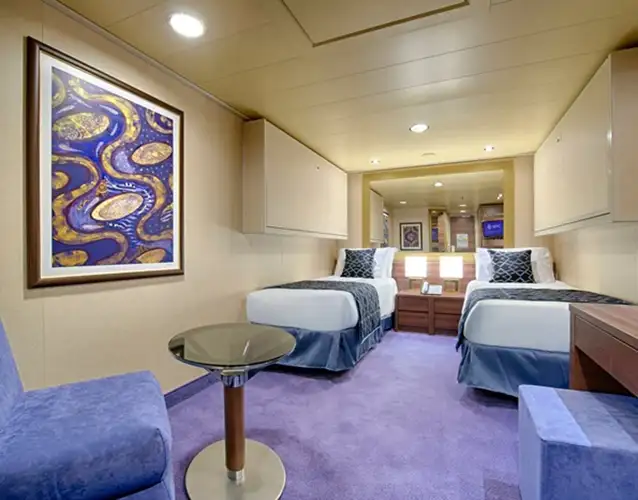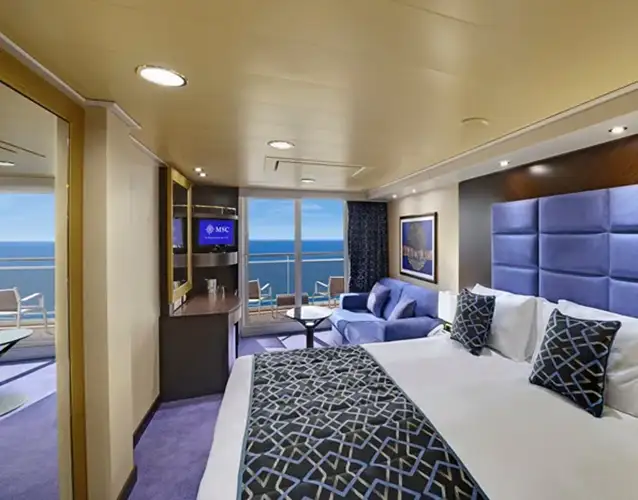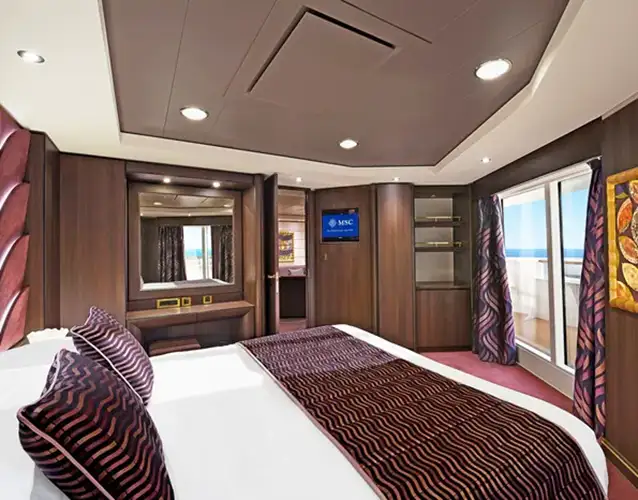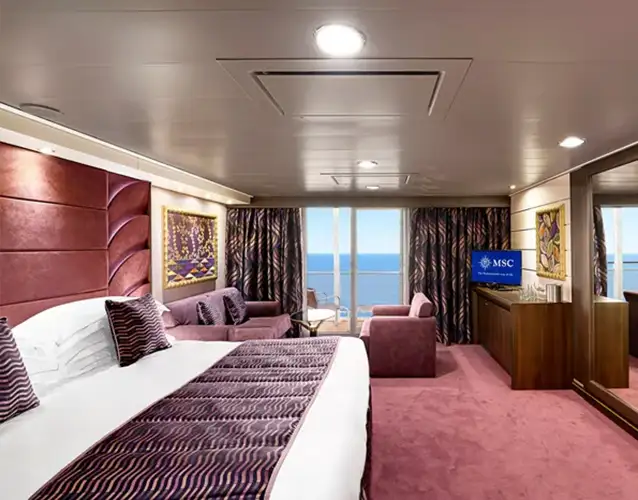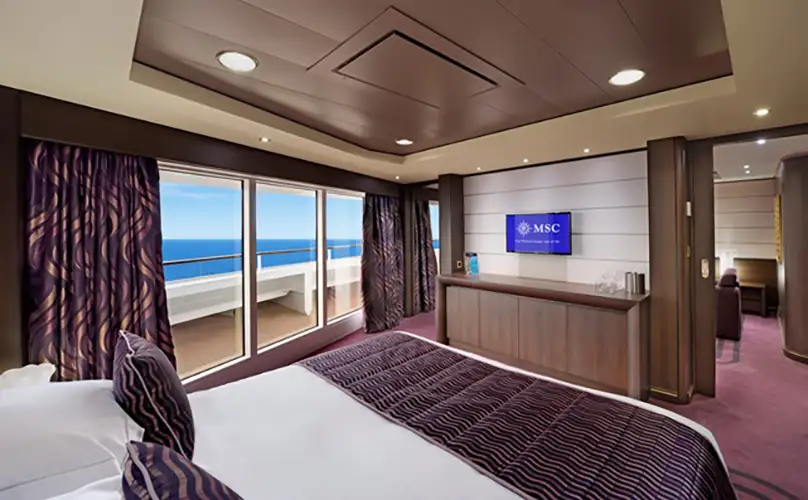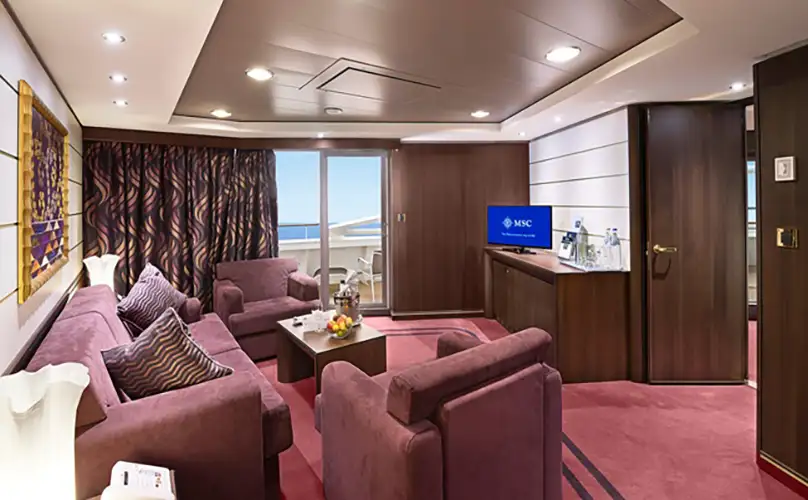MSC Cruises Ocean Cruises: 18 nights from Southampton with MSC Preziosa
Oct 7, 2025
United Kingdom, France, Spain, Portugal, Brazil
Cruise itinerary
Departure Port: Southampton ➞
Landing: Rio de Janeiro
-
Tuesday, October 7, 2025 - 8:00 PMSouthampton
-
Wednesday, October 8, 2025 8:00 AM - 8:00 PMLe Havre
-
Thursday, October 9, 2025Navigation
-
Friday, October 10, 2025 8:00 AM - 6:00 PMGijon
-
Saturday, October 11, 2025 7:00 AM - 4:00 PMLa Coruna
-
Sunday, October 12, 2025Navigation
-
Monday, October 13, 2025 9:00 AM - 5:00 PMFunchal
-
Tuesday, October 14, 2025 9:00 AM - 5:00 PMSanta Cruz de Tenerife
-
Wednesday, October 15, 2025Navigation
-
Thursday, October 16, 2025Navigation
-
Friday, October 17, 2025Navigation
-
Saturday, October 18, 2025Navigation
-
Sunday, October 19, 2025Navigation
-
Monday, October 20, 2025Navigation
-
Tuesday, October 21, 2025 9:00 AM - 7:00 PMSalvador
-
Wednesday, October 22, 2025 8:00 AM - 6:00 PMIlheus
-
Thursday, October 23, 2025Navigation
-
Friday, October 24, 2025 8:00 AM - 6:00 PMBuzios
-
Saturday, October 25, 2025 8:00 AMRio de Janeiro
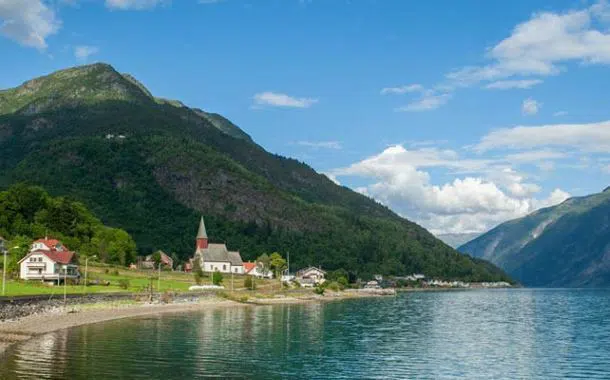
Southampton
Southampton is a city positioned in the South of Great Britain and its port is one of the main ports in Europe. From the port of Southamptos it is possible to set sail for a Cunard transatlantic cruise and reach New York, or visit Amsterdam and Belgium with an MSC cruise. The city offers, further to the New Forest National Park, a wide natural park with its suggestive woods, also many museums and art galleries and remarkable architectural works. Noteworthy is King John’s Palace, of Norman origins as well as the old walls with 7 entrances to the city. An evidence of the Victorian Age is Tudor House, collecting objects dated back to that period. For the art lovers, Southampton City Art Gallery offers exhibitions of any kind of art, from drawing to photography with shows that attract many visitors.
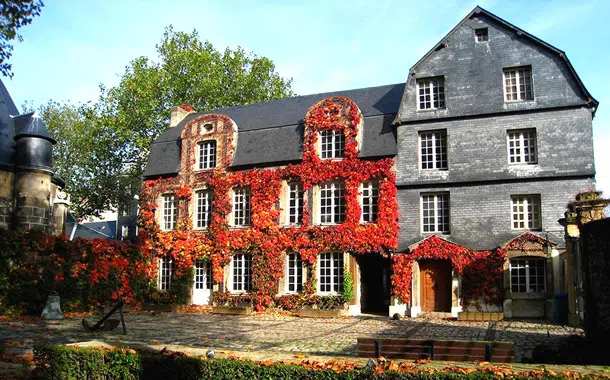
Le Havre
Le Havre is worth a visit, not only as a stopover on the way to Paris or other inland destinations, but also as one of the great examples of post-war planning. It is a strange and strangely fascinating city, listed by
Unesco as a World Heritage Site.
Wandering through the streets of the seaside town of Le Havre, one might think one had stumbled upon a forgotten outpost of the Eastern Bloc. Obliterated by World War II bombings, the city was completely rebuilt by the Belgian architect Auguste Perret and, what emerged from the ashes of old Le Havre, is a kind of love letter to concrete: endless rows of blocks of buildings, straight avenues stretching out from the central square, dominated by the 100 m high 'Stalinist Baroque' style cathedral, looks like something straight out of the pages of '1984'.
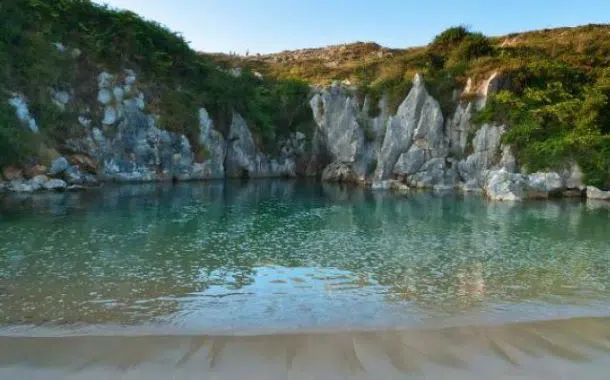
Gijon
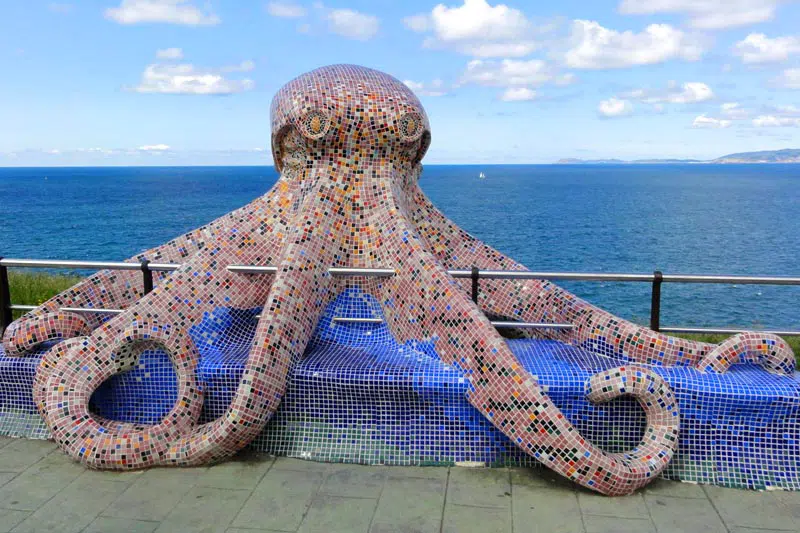
La Coruna

Funchal
The famous Portuguese poet, Júlio Dinis described Funchal as: ‘The sea on one side, the mountains on the other and between these two majestic splendours, the city smiles like a sleeping child, safe and warm, between its parents’. Funchal, the capital of the Portuguese island of Madeira is the soul of Portugal. Settlers over 500 years ago were attracted to this sheltered place, which is structured like a natural ‘amphitheatre’. Gentle slopes, abundant greenery and flowers, rise above the pretty harbour for almost 1,200 metres. The port is located 15-minute walk from the city center, in Funchal's magnificent bay with its sparkling blue waters. Due to its strategic mid-Atlantic location, Madeira has been a stopover point for ocean-going ships for many years.
Santa Cruz de Tenerife
Santa Cruz de Tenerife, the capital of Tenerife, is located in the north-east of the island. Its pleasent climate and commercial areas make the city the perfect place for walking and enjoying long hours of relaxation. There are lots of things to visit in the city such as its avenues, parks and Henry Moore's most famous sculptures, hidden treasures and historic buildings such as the Church of the Conception or the Carta Palace.
Do not miss the opportunity to taste local cuisine. Santa Cruz de Tenerife is a beautiful port located in Tenerife, the largest of the western islands of the Canary Islands archipelago. In the area around the port, there are wide avenues, squares, exotic green areas and some examples of modern architecture. At the heart of the city, near the sea, there is Plaza de España, built in the mid-20th century and once the site of the San Cristobal Castle (16th century).
The oldest part of the city is rich in religious monuments. The construction of the Church of San Francisco, one of the best examples of the Baroque style, began in the 17th century. The Church of Pilar, dated back to the 18th century, stands on the remains of an ancient temple. The city has also some green areas filled with exotic tree species. The Garcia Sanabria Park houses an important outdoor Sculpture Museum.
Another not to be missed place is the Maritime Park, a recreational area designed by architect César Manrique and located in the old Canary Islands commercial basin. Also known as the Black Castle, this circular defensive bastion was built in the first half of the 17th century with volcanic stones. From a naturalistic point of view, Tenerife is an island of contrasting landscapes. The wide beaches of fine sand in the south of the island give way to lush vegetation in the north.
Every year, the outfits of the island's capital prepare to host Carnival, declared International Tourist Interest and one of the most spectacular in Spain. Its privileged location makes it possible to enjoy beautiful beaches such as Las Teresitas, get to know the city of San Cristóbal de La Laguna, declared a UNESCO World Heritage Site, or visit Teide National Park, the symbol of the island.

Salvador
Salvador, the capital of the state Bahia in Brazil, is a lively city that vibrates to the rhythm of samba and candomblé, offering a rich and variegated cultural mosaic. This historic city, renowned for its breathtaking beaches, colonial architecture and vibrant nightlife, is a stop not to be missed on Salvador cruises. Its unique atmosphere, where tradition and modernity are linked together, offers visitors an unforgettable experience, immersed in Afro-Brazilian history and culture.
Explore the historic center: the Pelourinho
The heart of Salvador is the Pelourinho, its historic city center, declared a UNESCO World Heritage Site. Walking around the clobbed streets, you can admire colorful colonial houses, Baroque churches and lively squares. The Pelourinho is also the stage of recurring open-air musical performances and folkloric dances, offering visitor an authentic taste of local culture. Cruises that stop in Salvador allow you to immerse in this rich human cultural heritage, letting passengers living unique moments.
Immerse youself in Afro-Brazilian culture Salvador is considered Afro-Brazilian cultural capital of the country. Here, visitors can explore museums dedicated to African art, attending candomblé cerimonies or simply enoying the local cuisine, that fuses African, Indigenous and Portuguese flavors. Enjoying a cruise that includes Salvador offers the opportunity to discover these deep cultural roots, enriching the trip with meaningful and authentic
experiences.
Discover Paradise Beaches
In addition to its cultural richness, Salvador amazes with its enchanting beaches. From Praia do Forte to Itapuã, the coastlines around Salvador invite relaxation and recreation, with crystal-clear waters and fine sand. Cruises stopping in Salvador allow travellers to enjoy these natural wonders, offering a perfect balance of culture, adventure and relaxation. Opting for a cruise that stops in Salvador means choosing a journey rich in history, culture and natural beauty. The city offers a complete travel experience, capable of satisfying every type of traveller, from the passionate historian to the adventurer, from the bodybuilder to the seeker of relaxation on the beach. Salvador promises to leave indelible memories in the hearts of those who visit it, making it a must-see destination on cruises along the Brazilian coast.
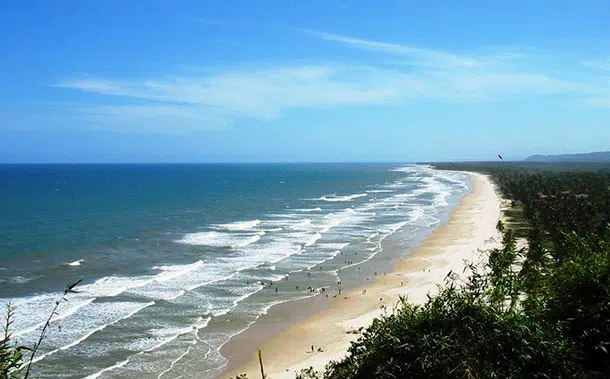
Ilheus
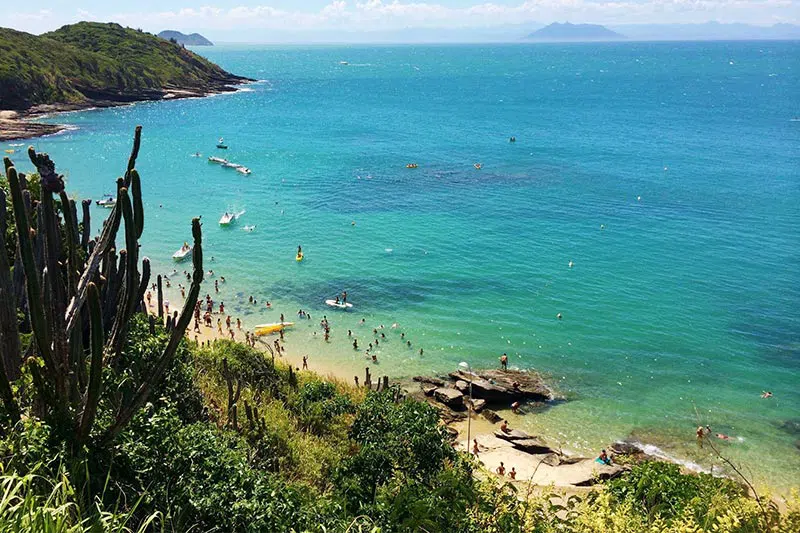
Buzios
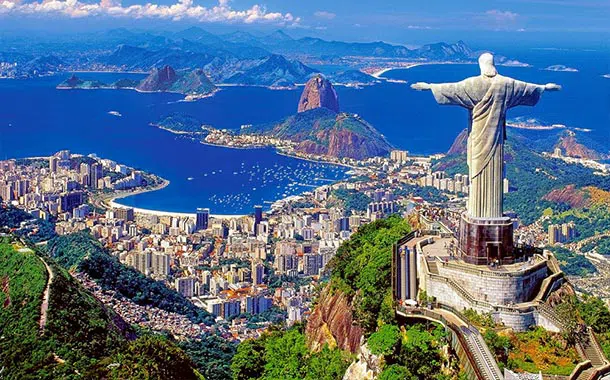
Rio de Janeiro
Rio de Janeiro (whose name means January River in Portoguese) is a city in Brazil and the capital of the homonymous confederate state. Its population is almost 6,186,710 inhabitants (according to 2009 IBGE census), and its surface is 1,256 km2 while the population in the metropolitan area is almost 12 million habitants. Rio is the Brazil's second largest city after São Paulo and it was the capital of the state from 1763 until 1960, after Salvador da Bahia and before Brasilia.
The city is famous for its tourist attractions including: the beaches of Copacabana and Ipanema, Art Nouveau statue of Jesus called Cristo Redentor located on Mount Corcovado, the Pão de Açúcar (Sugar Loaf) with its cable car, and its annual carnival, the most famous in the world. In Rio de Janeiro there is the largest forest within an urban area, theTijuca forest.
